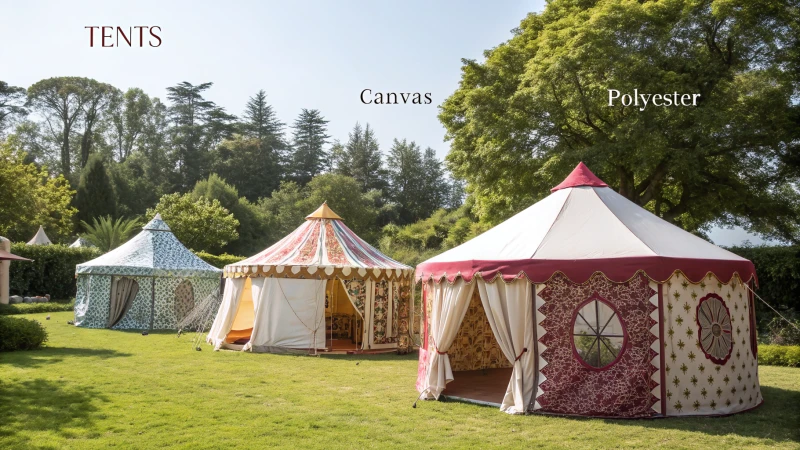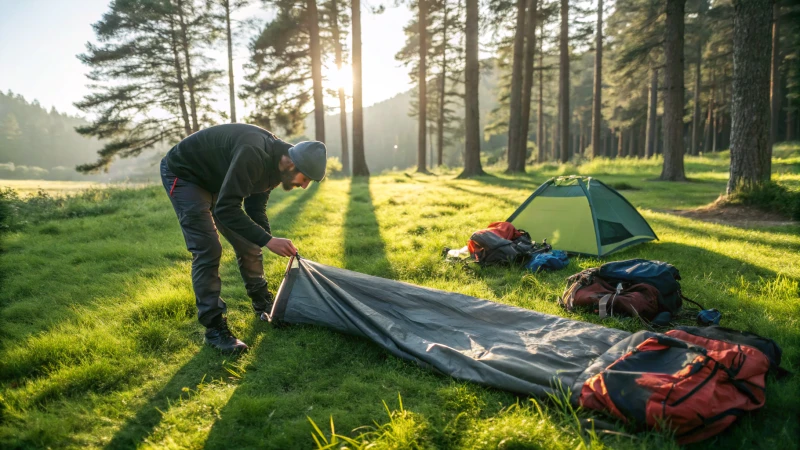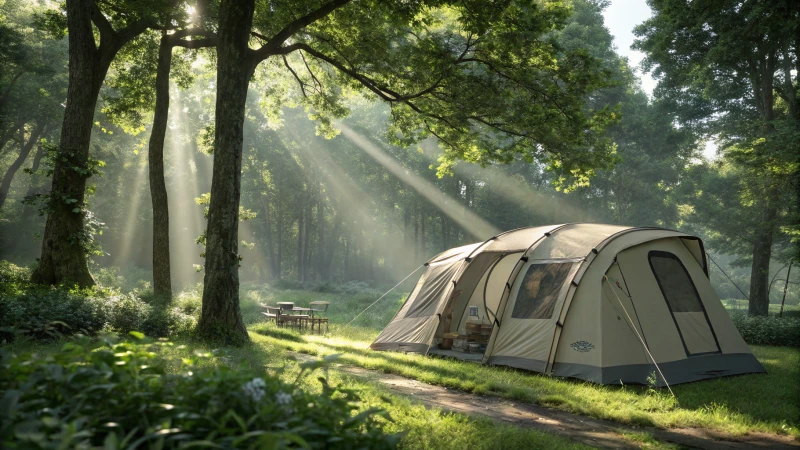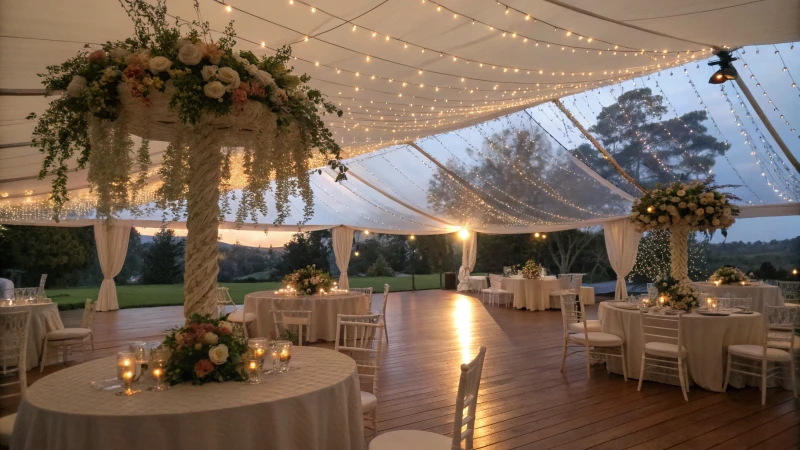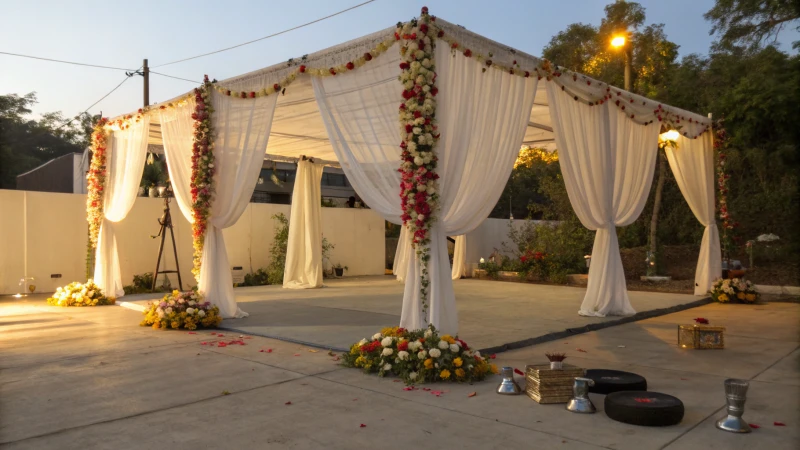
Ever tried to squeeze too many people into a tent and felt like sardines in a can?
In a 30×50 tent, you can comfortably fit about 125-150 people with banquet-style seating and 187-250 people with theater-style seating. It all boils down to your layout and any extra space you might need.
I remember planning a family reunion and the challenge of figuring out how many relatives could fit under one tent. That’s when I learned that the layout makes all the difference. For a cozy dinner setting with round tables, you’ll need more room per person, but for a presentation or ceremony, theater-style seating packs them in tighter. Don’t forget to factor in any additional areas like a dance floor or buffet. Trust me, giving everyone enough elbow room can make or break your event.
A 30x50 tent fits 150 for banquet seating.True
A 30x50-foot tent can accommodate between 125-150 people for banquet-style seating.
Theater-style seating allows 300 people in a 30x50 tent.False
Theater-style seating in a 30x50-foot tent accommodates 187-250 people.
How Do Different Seating Arrangements Impact Learning?
Ever wondered how the simple act of rearranging chairs can transform a classroom into a dynamic learning hub?
Different seating arrangements can significantly enhance communication, focus, and flexibility in educational settings. The right choice can boost interaction, improve learning outcomes, and facilitate better classroom management.
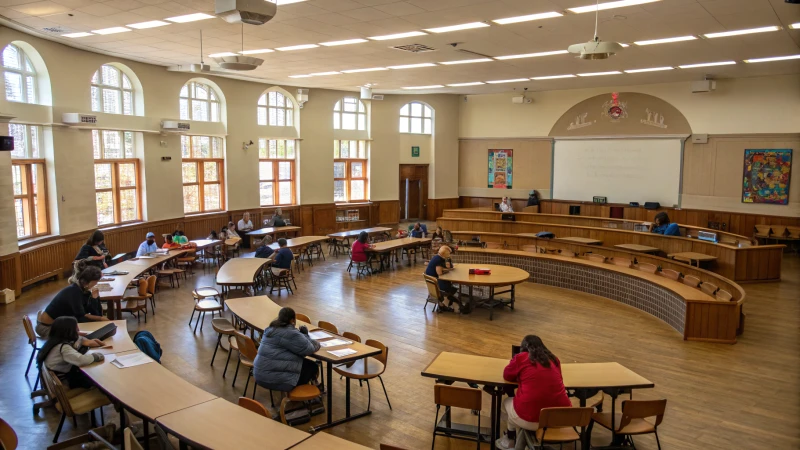
Banquet-Style Seating
Imagine walking into a room where tables are set up just like at a wedding banquet. It’s perfect for when I want my students to collaborate and get the creative juices flowing. Banquet-style seating encourages everyone to jump into discussions and work as a team. It’s a bit like watching a lively dinner party unfold, but with educational goals in mind. Although it’s fantastic for group activities, I’ve noticed it’s not always ideal for tasks that require solitary focus.
| Pros | Cons |
|---|---|
| Encourages collaboration | Limited individual focus |
| Supports diverse learning styles | Requires more space |
Theater-Style Seating
Picture this: rows upon rows of chairs all facing forward, much like in a movie theater. Theater-style seating is my go-to for lectures or presentations where I need everyone’s eyes on me. This setup minimizes distractions and ensures that each student can see and hear clearly. However, it’s not the best when I want them to break out into groups and chat amongst themselves.
| Pros | Cons |
|---|---|
| Maximizes visibility | Limits interaction |
| Ideal for presentations | Less suitable for group work |
Flexible Seating Options
Now, flexible seating—this is where things get interesting. Imagine giving students the freedom to choose where and how they sit, maybe on bean bags or at standing desks. It’s like a choose-your-own-adventure book, but for seating. This approach not only promotes independence but also caters to individual learning preferences. Of course, it requires some thoughtful planning on my part to keep the noise level down and ensure things don’t get too chaotic.
| Pros | Cons |
|---|---|
| Promotes independence | Requires careful management |
| Adaptable to student needs | Potential for increased noise |
For those of us seeking to shake things up in the classroom, exploring the benefits of flexible seating1 can provide valuable insights into creating more inclusive and effective learning environments. Plus, understanding the impact of seating on student behavior2 can guide us in choosing the best setups for our teaching methods.
When I’m designing a classroom layout, I always consider the specific needs of my students and the nature of our activities. By striking a balance between structure and flexibility, I aim to create spaces that support both individual learning goals and collective classroom objectives. Exploring resources on classroom design strategies3 can offer further guidance for optimizing educational settings.
Banquet-style seating supports diverse learning styles.True
Banquet-style seating encourages collaboration and accommodates various learning preferences.
Theater-style seating is ideal for interactive activities.False
Theater-style seating focuses on presentations, limiting interaction and group work.
How Does Adding a Stage or Dance Floor Affect Tent Capacity?
Ever tried squeezing a dance floor into a packed tent? It’s like fitting a square peg in a round hole!
Adding a stage or dance floor to your tent will decrease its capacity because these features occupy valuable space. The impact varies based on the size of the stage or dance floor and the event’s seating style, such as banquet or theater.

Understanding Tent Space Allocation
In the world of event planning, every square foot is precious, especially when you’re working with a 30×50-foot tent. I remember organizing a summer party where we wanted to include both a stage for live music and a dance floor. The challenge was making sure we didn’t leave guests awkwardly standing without enough room. Every decision about space usage feels like a strategic chess move.
Calculating Space for a Stage
Picture this: a standard stage could swallow up around 100-200 square feet. I recall once debating whether to trim down the stage size just so we could fit more family members who insisted on bringing their plus-ones! In banquet-style seating, where each guest needs about 10-12 square feet, a 150-square-foot stage could mean saying goodbye to 12-15 guests. It’s like choosing between your favorite cousins.
Incorporating a Dance Floor
And then there’s the dance floor, the heartbeat of any lively event. Typically, you’ll need about 2-4 square feet per dancer. For example, with a 200-square-foot dance floor, you might lose space for 20-33 guests in banquet-style seating. I’ve learned that balancing dance space with seating is like trying to predict how many people will actually hit the dance floor!
Seating Arrangements and Capacity Impact
| Seating Style | Without Stage/Dance Floor | With Stage (150 sq ft) | With Dance Floor (200 sq ft) |
|---|---|---|---|
| Banquet (10 sq ft/person) | 150 guests | 135 guests | 130 guests |
| Theater (6 sq ft/person) | 250 guests | 225 guests | 217 guests |
Practical Tips for Maximizing Space
One trick I’ve found is using a portable dance floor or minimizing stage size—it’s amazing how much space you can save! Also, exploring different tent shapes like Arcum or Dome tents can really optimize your layout. Explore tent options4 for that perfect balance between features and guest capacity.
Event Type Considerations
Every event is unique, and what works for one might not work for another. A wedding often cries out for a spacious dance floor, while a corporate gathering might prioritize more seats for presentations. Weighing the importance of each feature can help achieve that perfect guest experience.
So, while adding stages or dance floors can significantly affect tent capacity, a little creativity with seating arrangements or versatile tent designs can help you get the most out of your space. It’s all about finding that sweet spot between function and fun!
A 150 sq ft stage reduces banquet seating by 12-15 guests.True
A 150-square-foot stage requires space for 12-15 fewer banquet guests.
A dance floor needs 10 square feet per dancer.False
Dance floors require about 2-4 square feet per person dancing.
How Can You Maximize Tent Space Effectively?
Ever squeezed yourself into a tent and wondered how to make it feel like a cozy little haven instead of a cramped mess? Let me share some tips that have turned my camping adventures into more comfortable experiences.
To maximize tent space, start by planning an efficient layout, use vertical storage, and incorporate multi-functional furniture. Lightweight materials can also help reduce bulk, making your tent feel more spacious.

Optimize Your Layout
When I first started organizing tents for events, I quickly learned the importance of planning the layout meticulously. For instance, if you’re setting up for an event, think about the seating arrangement. Theater-style seating uses less space and feels open compared to the more intimate banquet-style. This little tweak made a massive difference during one of my events, where shifting to theater-style allowed us to comfortably accommodate more guests.
| Seating Style | Space Per Person | Max Capacity |
|---|---|---|
| Banquet | 10-12 sq ft | 125-150 |
| Theater | 6-8 sq ft | 187-250 |
Explore different seating arrangements5 to find what fits best for your event.
Utilize Vertical Space
I’ve learned that vertical space is a lifesaver when you’re working with limited room. In my own camping experiences, hanging hooks and adding wall pockets for essentials like keys or headlamps kept the floor free and clear. It’s amazing how such a small change can make the tent feel less cluttered.
Choose Multi-Functional Furniture
Once, while preparing for a long trip, I discovered the magic of multi-functional furniture. Imagine a table that can transform into a bed—it was like finding gold! This concept has since become a staple in my setup, ensuring I always get the most out of every inch of space. Consider exploring multi-functional furniture6 options that suit your needs.
Organize Efficiently
I can’t stress enough how organizing efficiently changes the game. I use labeled bins to keep my essentials neatly grouped together. This not only maximizes space but also saves me time searching for items, making my stays stress-free.
Select Lightweight Materials
Switching to lightweight gear was another revelation during my trips. Inflatable mattresses and collapsible chairs have drastically reduced the bulk of my packing list. They’re compact yet reliable, ensuring I travel light without compromising comfort.
Explore More Options
If you’re like me and constantly seeking better solutions, consider modular tents. These are designed to expand as needed and can include built-in storage solutions. I remember stumbling upon these options during a trade show, and they’ve been on my radar ever since. They’re perfect for those who want to maximize space without sacrificing comfort—exactly what I’m all about. Discover modular tent options7 that might suit your specific needs.
Theater seating uses more space than banquet seating.False
Theater seating uses less space, 6-8 sq ft per person, than banquet.
Hooks in tents help maximize floor space.True
Using hooks for storage frees up floor space, optimizing tent use.
How do weather conditions impact tent setup and capacity?
Have you ever tried setting up a tent when the weather seems to have its own agenda?
Weather conditions like wind, rain, and temperature play a huge role in how tents are set up and what they can handle. Wind might mean you need sturdier anchors and fewer people inside, while rain calls for waterproof materials to keep everyone dry.

The Role of Wind in Tent Setup
I remember the first time I set up a tent with a strong breeze that felt like it was out to get us. We had to rely on robust anchoring solutions8, like heavier stakes and weights, just to keep the tent grounded. The wind was so relentless that we ended up reducing the number of people inside to keep it safe. Generally, tents can handle winds up to 30-40 mph, but when those gusts start howling louder than my dog at dinnertime, it’s crucial to adjust plans and perhaps consult your tent’s wind ratings.
Wind Speeds and Tent Stability
I’ve learned from experience that exceeding those wind speeds means reassessing the situation entirely—sometimes even relocating if it gets too risky. Safety first, always!
Rain’s Influence on Material Choice
Oh, the joys of camping in the rain! Waterproof materials are non-negotiable here. I can’t tell you how many times I’ve regretted not checking seams for leaks or failing to set up rain gutters9 to manage the downpour. Here’s a quick guide to keep your gear dry:
| Material | Waterproof Level |
|---|---|
| PVC | High |
| Polyester | Moderate |
| Canvas | Low |
Temperature Considerations
Temperature can make or break a camping trip. In sweltering heat, I find that tents with mesh windows are lifesavers, providing much-needed ventilation. When it’s chilly, I’ve learned the hard way that insulating options10 are essential to prevent the night from feeling endless.
Snow Load and Structural Integrity
If you’re ever braving snowy conditions, make sure your tent is rated for snow load. I still remember clearing snow off our tent roof with a broom at 3 AM because we underestimated Mother Nature’s wrath.
Securing Tents in Storms
For severe weather, it’s all about taking those extra precautions. Using additional guy lines and finding natural windbreaks or temporary barriers11 can provide some peace of mind—and protection!
Planning for unpredictable weather conditions by evaluating forecasts and knowing your tent’s capabilities ensures not just a successful event but also a safe one.
Tents can withstand winds up to 30-40 mph safely.True
Most tents are designed to handle winds up to 30-40 mph, beyond which stability is compromised.
PVC fabric has a low waterproof level for tents.False
PVC is known for its high waterproof level, making it suitable for rain protection in tents.
Conclusion
A 30×50 tent accommodates 125-150 people for banquet seating and 187-250 for theater seating, depending on layout and additional features like stages or dance floors.
-
Learn how flexible seating can boost student engagement and adapt to various learning styles effectively. ↩
-
Discover how different seating configurations influence student behavior and classroom management. ↩
-
Explore strategies for designing classrooms that enhance learning outcomes through effective seating arrangements. ↩
-
Explore various tent designs to optimize space and accommodate more guests. ↩
-
Explore various seating arrangements to optimize space based on event type. ↩
-
Learn about versatile furniture options that maximize tent utility. ↩
-
Find tents designed to expand and offer integrated storage solutions. ↩
-
Learn effective anchoring techniques to secure your tent in windy environments. ↩
-
Discover practical rain gutter solutions to prevent water ingress in tents. ↩
-
Find methods to insulate your tent, ensuring warmth during cold weather. ↩
-
Explore temporary windbreak options to shield your tent from strong winds. ↩


